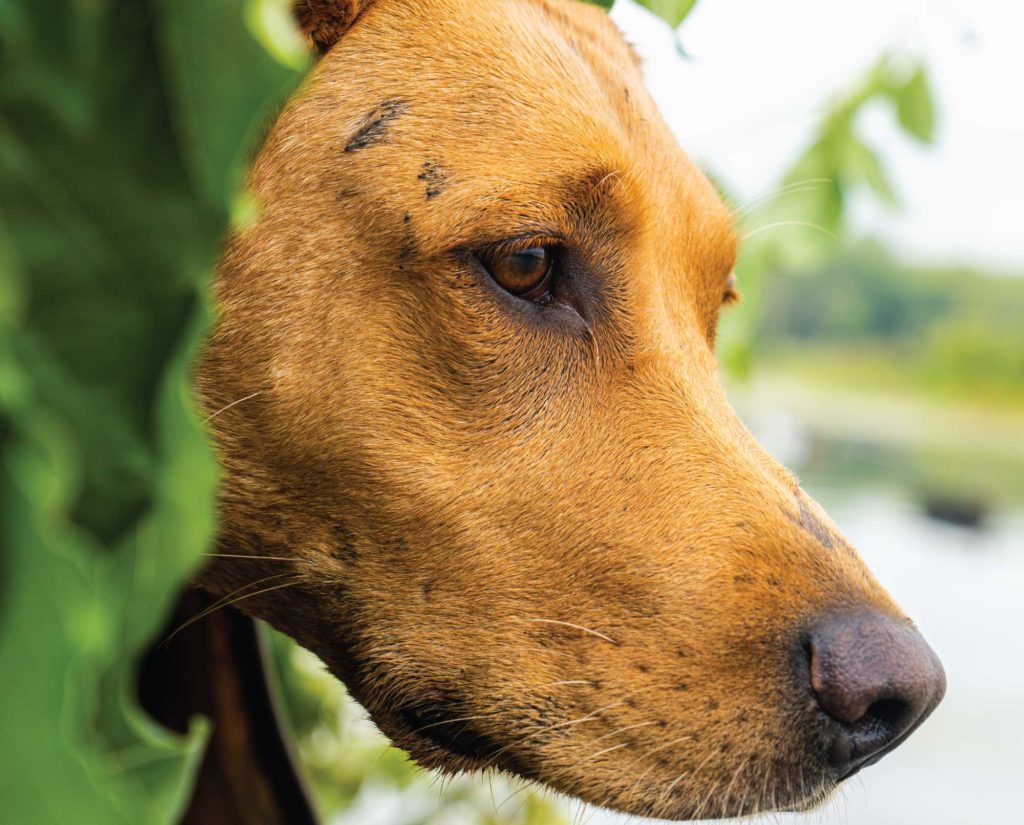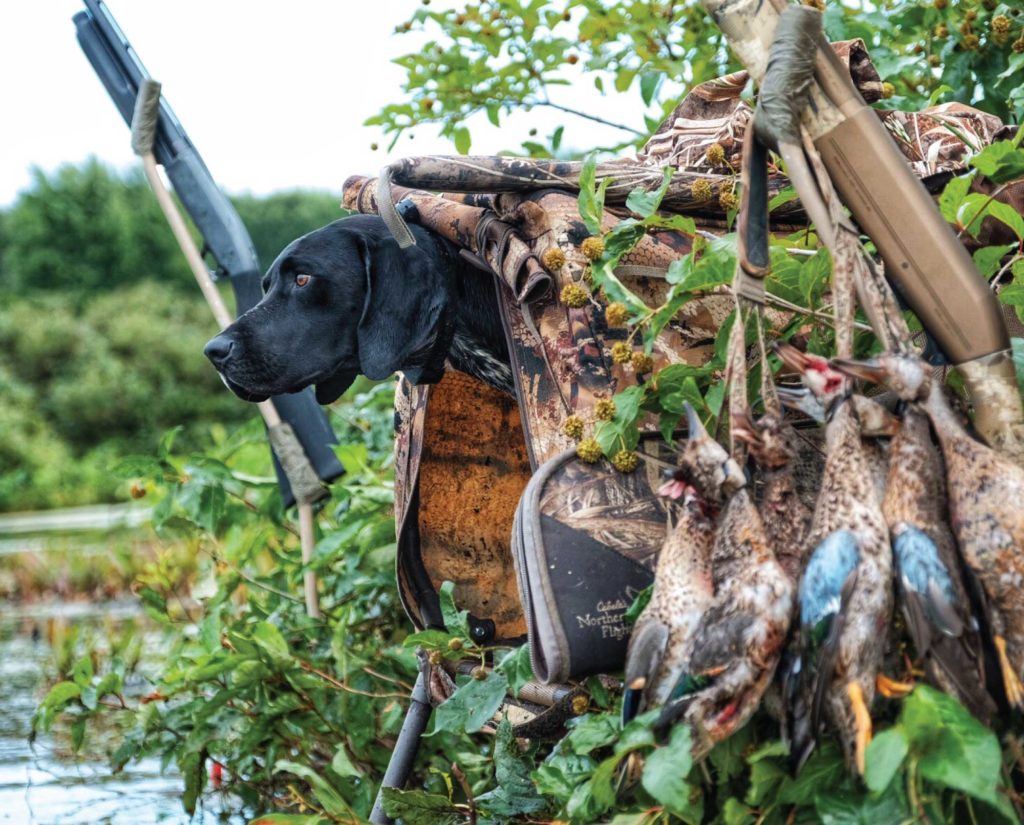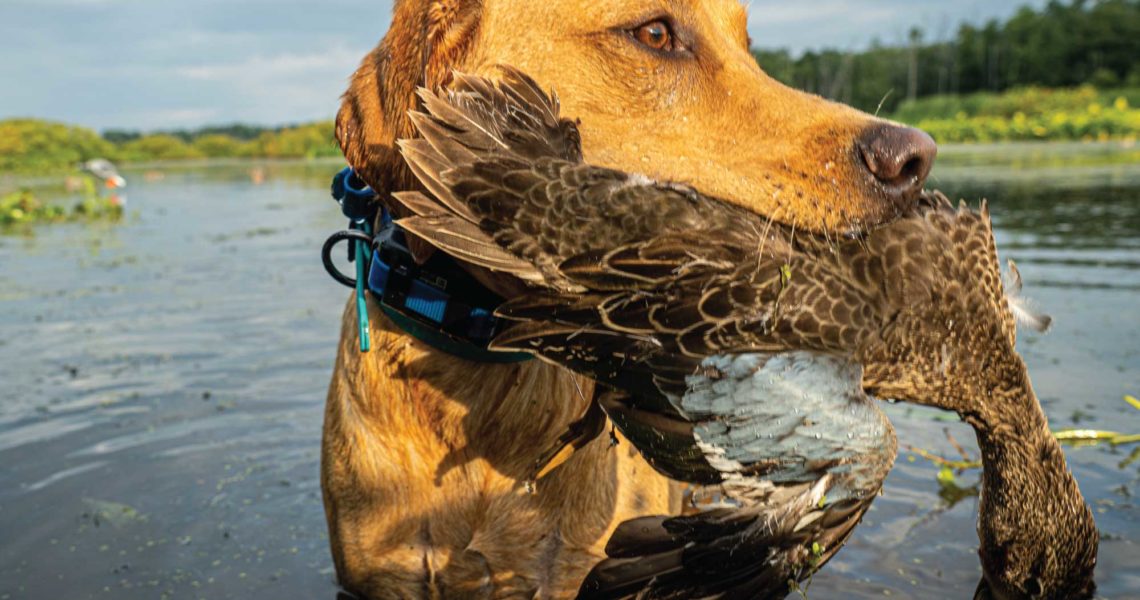Early season teal hunting can provide an opportunity to dust off the shotgun, tune up your retriever
It seemed my eyes had just shut when the irritating sound of my alarm woke me. I never sleep on opening eves — ever. And the teal hunting opener is no exception.
The anticipation of what is to come takes hold of me, and I have learned to embrace it rather than fight it. The 3 a.m. wake-up call is nothing new to a duck hunter. We pry ourselves from warm beds with our four-legged best friends in hopes of hearing that whistle overhead at first light. We do it day in and day out because it is a part of what makes us whole.
My friend and I loaded my lab, Annie, into the truck and headed for one of our local state game areas where teal can be found with a bit of work. We met my coworker and were motoring out from the launch about 4:15 a.m.
The warm Michigan air and water comforted me; I knew it would only be a matter of weeks before nightly temperatures dropped, my breath would become visible and I would trade my light, T-shirt under-layer for long underwear. Although I loathe the heat most of the year, I don’t mind it teal hunting — it is part of the experience.
We set the blocks out in no particular order — teal don’t seem to mind much anyway. They are going to either swing through like little rocket ships and give you a passing shot or they are going to bomb in — there isn’t much in-between.
Shortly before what would be our normal shooting light if it was the regular season (Michigan’s teal shooting hours start later to help with bird identification), wood ducks and mallards started to fill the sky. The whistle of wings seemed close enough for me to grab the ducks as they skirted over our heads to look at the spread.
Annie’s excitement was building as little whimpers resonated from her blind. We watched hundreds of ducks, cormorants, egrets and an eagle wake up as the sun peaked over the eastern horizon.
About three minutes before shooting light, we had a group of six teal dive into our decoys. Most duck hunters know this moment of panic and excitement on opening day — will these ducks hang around long enough for the shooting time bell to ding?
Quietly, we loaded our shells as the clock struck 7:04 a.m. I tried to whisper to Annie to keep her calm and quiet. We counted down the shot, and seconds later, four ducks lay belly up. Annie leapt from her stand marking the beginning of our 2020 season.

Teal hunting season
There are three types of teal in North America: the blue-winged, green-winged and cinnamon teal.
For those who haven’t hunted teal, it is a special treat. These early migrators are fast and small. Couple that with early-season jitters and poor shooting, and the recipe is rarely ever in the hunter’s favor.
September 1 marks the opener of early goose and teal season for many states across the country. Teal prefer shallow mudflats where they can dabble for vegetation and aquatic insects. Generally, they fly low and much more erratic than other ducks.
They usually tip the scales at about 1 pound and are some of the first ducks to fly south.
Teal will occupy lots of different bodies of water during their early pilgrimage. Many hunters will venture to mudflats and shallows near them.
I have harvested and hunted teal on small, wooded ponds, shallow river oxbows and inland lakes. It is all about finding shallow vegetation and then looking for some birds hanging around. Scouting the week before the season pays huge dividends when trying to set up on these fickle birds.
Scouting for teal hunting
Teal can present frustrating challenges when scouting. First, hunters need to be sure they are identifying teal and not juvenile or molting wood ducks, which can be very similar in the northern reaches of some flyways. Early season ducks all tend to look more brown than when they don their plumage. Looking for the baby blue patch on bluewings or trying to catch the subtle green speculum tucked away on a greenwing when they are cupping in for a landing can help hunters be sure they are after the right quarry.
Look for flocks of small ducks. Teal have usually started their migration and will be in groups as big as three dozen or as small as eight or 10. Teal have a light-brown underwing.
One of the biggest identifying factors that helped me early on differentiate between woodies and teal in Michigan was their flight pattern. Wood ducks, at least in my experience, tend to fly at a medium height — they don’t fly as high as mallards, generally, but higher than divers or teal. Teal will come screaming towards your decoys at 10 feet above the water regularly.
Teal also do lots of twisting and turning when they fly. They are acrobatic ducks that can change direction in an instant. If you’re unsure about what your target is, don’t pull the trigger; that is key when teal hunting. Let the ducks land, and be sure to identify the ducks as teal. After a few hunts, you will start to key in on what teal do in the air, their small stature and be able to start identifying them from greater distances on the wing.
Probably the most frustrating part of scouting for teal happens the morning after you have found birds. Oftentimes, the birds you found the day before have vanished. Teal are sensitive to cold fronts and photoperiods. This is normal and if you have found a good spot — check it again after a cool night to see if more teal have moved in.
Decoys
My friends and I are not obsessive over our decoy spreads. Generally, we put out around 18 early-season teal decoys, six geese and a spinning-wing decoy and we find that is enough for hunting. Using hen mallards (almost all ducks are brown in early September) also works well. If you are contemplating only one purchase for teal season and already have a half dozen to a dozen hen mallards, buy some floater geese. For some reason, I find early-season ducks like to land near goose decoys.
Spinning-wing decoys work well in the early season to catch ducks’ attention. I prefer to use one with a remote so I can turn the decoy off if we hear or see geese — geese will flare away from the spinners sometimes.
Setting decoys is an art that I still have not mastered. For beginners, try to keep the wind at your back or at least have a crosswind. You want the decoys to be on the downwind side and to try and land the ducks just short of your decoys. Teal, given their small size and flying behavior, don’t seem to be as affected by the wind, and rarely ever have I had one perfectly land into the wind like some of the bigger ducks will do. It is good practice to try and keep the wind at your back, though.
We generally set our decoys in family groups of four or six. We will have three or four pods of ducks with a pocket in the middle about 25 yards from our blind. The hope is that they will land in that pocket.

The hide
The quickest way to ruin a good hunt is a bad hide. Some folks put on ghillie suits and paint their face — and I presume they are successful. I have found that wearing camouflage similar to your surroundings and staying still works well for teal and early-season ducks that haven’t been pressured.
In some of our spots, I do take a panel blind in and set it in front of us. However, just backing up into the brush and sitting still has also worked well in those spots. Wearing a ball cap and keeping your head tilted down and scanning the sky just under the brim of your hat is another good way to keep birds from seeing your face — a dead giveaway to birds in the sky that something isn’t normal.
With all of the technology that has gone into duck hunting clothes and camo the last decade, there are jackets, waders and shirts that span from cheap to ridiculously expensive. When I take new hunters in the early season, they generally wear deer hunting camo and it works just fine.
The take
If only one point comes through from this piece, let it be this: know what you are shooting at. The quickest way to end teal hunting seasons will be if hunters harvest other ducks mistaking them for teal. This is especially important for states like Michigan who are only a few years out of their experimental teal season.
If you are unsure, let the ducks decoy. Look for small ducks in groups flying erratically. And try to spot the baby-blue or green speculum on teal when they bank for a landing. Take your time if the ducks are on the water.
Taking a duck on the water is sometimes frowned upon, but if I have done my job right (scouted, put out decoys and hid well), I consider it a success to land them. If you are going to shoot a duck on the water, aim lower than you initially think — two-thirds of the duck’s body is underwater.
Pass shooting can also provide exciting teal hunts. Teal’s tendency to group up can make it tough to pick out a single bird. However, try to pick the lead bird in a flock, take your time and follow through. Be mindful of your lead, too, if the teal aren’t close.
Putting it all together for a successful teal hunt
“You can’t shoot ‘em from the couch” is the old saying. And that’s true during teal hunting season. Scout beforehand, practice good waterfowl etiquette when other hunters are present and blend in with your surroundings.
Before you know it, your plate will be filled with delicious teal. Don’t forget to pluck and save the teal legs — one of the best wild game meals I have had was buffalo teal legs braised on the stove and then quickly pan-fried to crisp up the skin. Good luck, and shoot straight.
Last modified: August 30, 2022







